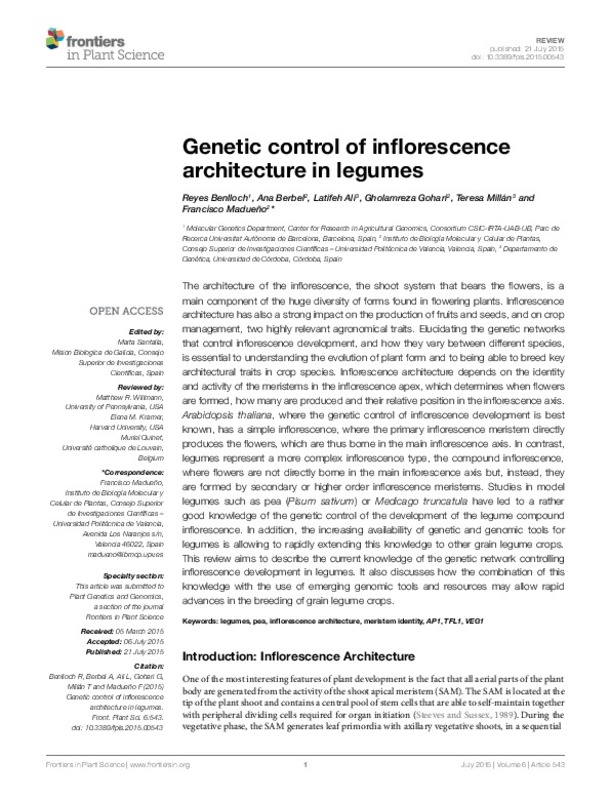JavaScript is disabled for your browser. Some features of this site may not work without it.
Buscar en RiuNet
Listar
Mi cuenta
Estadísticas
Ayuda RiuNet
Admin. UPV
Genetic control of inflorescence architecture in legumes
Mostrar el registro completo del ítem
Benlloch, R.; Berbel Tornero, A.; Ali, L.; Gohari, G.; Millán, T.; Madueño Albi, F. (2015). Genetic control of inflorescence architecture in legumes. Frontiers in Plant Science. 6(543):1-14. https://doi.org/10.3389/fpls.2015.00543
Por favor, use este identificador para citar o enlazar este ítem: http://hdl.handle.net/10251/68029
Ficheros en el ítem
Metadatos del ítem
| Título: | Genetic control of inflorescence architecture in legumes | |
| Autor: | Benlloch, Reyes Ali, Latifeh Gohari, Gholamreza Millán, Teresa | |
| Entidad UPV: |
|
|
| Fecha difusión: |
|
|
| Resumen: |
[EN] The architecture of the inflorescence, the shoot system that bears the flowers, is a main component of the huge diversity of forms found in flowering plants. Inflorescence architecture has also a strong impact on the ...[+]
|
|
| Palabras clave: |
|
|
| Derechos de uso: | Reserva de todos los derechos | |
| Fuente: |
|
|
| DOI: |
|
|
| Editorial: |
|
|
| Versión del editor: | http://dx.doi.org/10.3389/fpls.2015.00543 | |
| Código del Proyecto: |
|
|
| Agradecimientos: |
Research in the Madueño lab is supported by grants form the Spanish Ministerio de Economía y Competitividad (BFU2012- 38929), the Generalitat Valenciana (ACOMP/2014/109) and the EU (LEGATO project, GA n◦FP7-613551) and in ...[+]
|
|
| Tipo: |
|









